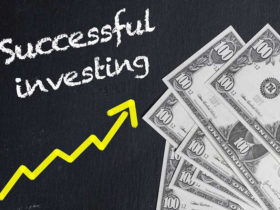The core of a good portfolio involves looking for quality companies that are trading at reasonable prices.
Solid companies tend to have the following features:
-
They are larger.
-
They are well run.
-
They have a strong balance sheet.
-
They have a sustainable competitive advantage.
-
They have the potential to grow earnings in the future.
Value is a very important element of the investment decision. Even the best companies can become bad investments if you pay too much for them. Remember that a reasonable price doesn’t necessarily mean a low price. Value is measured in terms of the share price relative to the company’s earnings and dividends. A company with a share price of $8.50 can be cheaper than one with a share price of 8.5 cents.
Professional financial analysts most commonly use a discounted cash flow model (a ‘DCF’) to value shares. However, the tried and true price earnings ratio and dividend yield are still very good measures of value.
A price earnings ratio is calculated by dividing a company’s share price by its net profit per share. Listed companies typically trade on 12 to 15 times earnings (profits). Some companies’ trade on less, if they have a more subdued outlook, while high quality companies, will trade on higher price earnings ratios.
A share’s dividend yield is the return from dividends. Riskier companies can be good niche investments in a share portfolio as well. They can add some spice to a portfolio of blue chips.
It is recommended that you are disciplined. It can be very helpful to write down a few rules for how you are going to invest in shares. Some investors take the time to outline how many shares they want to own and what sort of companies they will invest in. They also set limits on how much they will invest in riskier companies, or detail how much they will invest outside New Zealand or in various sectors. A set of guidelines like this can be a very helpful roadmap for your share investing strategy.
Investing in shares is best regarded as a long-term endeavour, but there will be times when shares need to be sold. You should think about removing shares from your portfolio if they have disappointed, or have hit problems.
Dividend cheques are arguably the best thing about investing in shares. You may not realise that there are two forms of return from shares: capital gains from a rising share price, and the return from dividends.
In the long term, a company’s profits drive a share price. If a company can grow its profits and dividends, and it has a promising future, its share price should rise.
Adding shares to your investment portfolio can be both rewarding and interesting, and a focus on quality stocks, dividends, investing gradually and having a disciplined approach can be useful guidelines for investors new to shares.
















